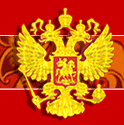
This lace possibly has its origins in the
early tape laces of Northern Italy. Some Russian laces feature
a pattern of little holes within the tape, reminescent of Milanese
Lace. There were a number of peasant
lace-making centres active during the 17th and 18th centuries,
each with its own distinctive forms. Some featured exotic
animal designs and vermicular tape patterns were joined with
a mesh ground.
Lace making was considered to be respectable
and profitable. Even members of wealthy families were involved
in trades. Nobles and prosperous mechants trained their daughters
in lace making as in a sort of fine arts. Women from impoverished
gentry families and widows worked long hours around the year.
But the majority of lace makers was represented by inhabitants
of garrets and basements.
Vologda lace has won deserved fame and world-wide
recognition for its high artistic value, rich ornament, and
excellent workmanship. The earliest laces, which have reached
us, date back to the 17th century. The lace woven from golden
and silver threads decorated rich civilian and church garments
and was mostly used by the nobility.
By the middle of the 19th century laces had
become widely traded. At the beginning of the 20th century
Vologda lace gained its distinctive artistic and stylistic
features. The richness and variety of the decorative pattern,
the clear-cut easy line of the design, monumentality of forms
and predominance of floral motives distinguish traditional
Vologda lace.
At the World Fair in Paris in 1937 the Vologda
Lace Association was awarded prize for the novelty and artistry
of its lace articles; at the Brussels Exhibition in 1958 Vologda
lace was awarded Gold Medal.
The present development of lace weaving in
Vologda and in Russia is above all associated with the "Snezhinka"
lace firm. The firm employs lace-makers and professional designers.
Lace is woven by hand with the help of bobbins. There is a
great demand for lace products both in Russia and abroad.
Other important lace-making centres were established
in Eletz, Riazan and Kirovsk. In Yaroslavl Province the early
lace was distinguished by bold patterns with a diamond and
square patterned ground mesh formed by brides with picots.
Lace making is one of the most laborious and
time-consuming handicrafts. Though the process of weaving
looks like 'a sort of fun it requires extreme patience, accuracy
and good taste. And those who do not copy samples, but create
them, often spend months searching after fresh idea. They
produce mountings of drafts and sketches of the whole thing
and all its parts. Each detail, every figure, curl and flower
then are woven to try different ways, colors, materials. When
the whole picture is ready on a big list of paper, the designer
has to work on technology to find the right place for each
pin. When this is over, lace makers start weaving itself.
Big articles are made by teams and need weeks and months of
hard work. Lace making tradition in Vologda survived through
hard times. Now it's still alive and developing.
|

